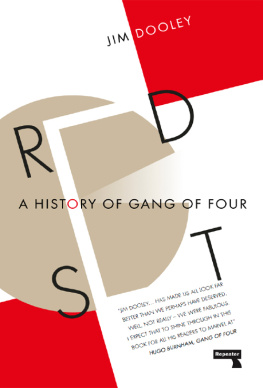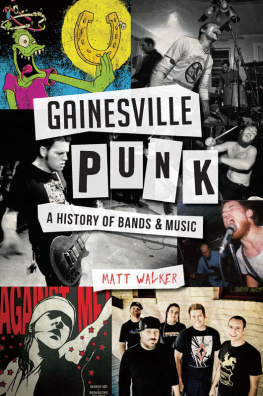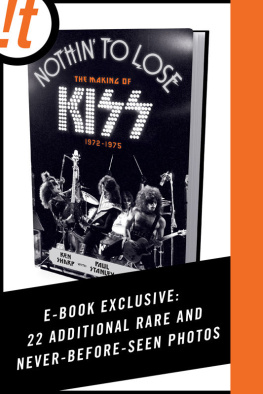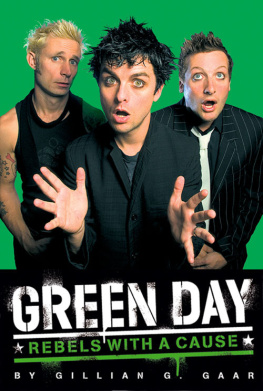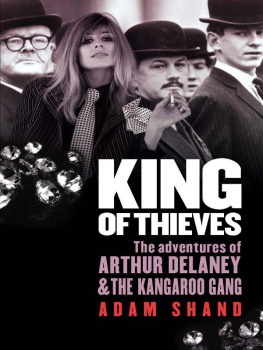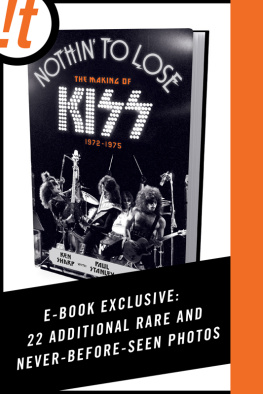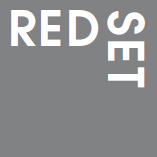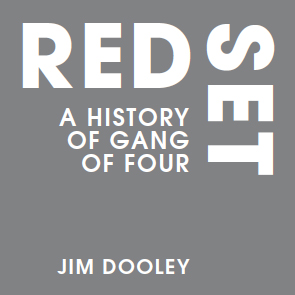Published by Repeater Books
An imprint of Watkins Media Ltd
19-21 Cecil Court
London
WC2N 4EZ
UK
www.repeaterbooks.com
A Repeater Books paperback original 2018
1
Distributed in the United States by Random House, Inc.,
New York.
Copyright Jim Dooley 2017
Jim Dooley asserts the moral right to be identified as the author of this work.
Cover design: Johnny Bull
Typography and typesetting: Jasper Sidock
Typefaces: Avant Garde/Meridien
ISBN: 9781912248032
Ebook ISBN: 9781912248049
All rights reserved. No part of this publication may be reproduced, stored in a retrieval system, or transmitted, in any form or by any means, electronic, mechanical, photocopying, recording or otherwise, without the prior permission of the publishers.
This book is sold subject to the condition that it shall not, by way of trade or otherwise, be lent, re-sold, hired out or otherwise circulated without the publishers prior consent in any form of binding or cover other than that in which it is published and without a similar condition including this condition being imposed on the subsequent purchaser.
For Ellen Willis & Mark Fisher
One great strength of Hchs photomontages is that they preached ambiguity to the converted.
Maud Lavin
Music, an immaterial pleasure turned commodity, now heralds a society of the sign, of the immaterial up for sale, of the social relation unified in money. It heralds, for it is prophetic. It has always been in its essence a herald of times to come.
Jacques Attali
Emotions are pretty cheap and easy to come to, but honesty is really difficult.
Jon King
We were collectively trying to avoid clichs, but at the time we were trying to connect with lots of people.
Andy Gill
This is either true or it isnt.
Jon King
CONTENTS
THE WHO AND WHY(S)
Perhaps Im attracted to things I dont immediately understand or might never fully comprehend. I think I have a soft spot for art that I find both appealing and challenging. As a long-time fan, I might not have always been able to grasp where Gang of Four were coming from, but they did make me endlessly curious. The band did not supply answers (as if answers were possible to their questions) but both during their prolific period and now, years later, it feels like they were making the right inquiries about our era: to what extent do we hold ourselves down and construct our own enclosures? How are we implicated in larger networks of power and exploitation? Are we actors in someone elses play or spectacle? How and why do our daily lives seem natural to us? Yet despite the weight of this material, the band still managed to be lively and funny. Furthermore, none of the lyrical content would have added up to much if the music had not been challenging and engaging as well; the sounds also made inquiries and tested conventions. What seems to have made Gang of Four particularly special was that their lyrics, music and accompanying artwork seemed to work in unison to pose uncomfortable, often funny, questions.
Observant Gang of Four fans will have noticed that there are a couple of books on the band in print. In some ways it was my disappointment with the first book to address the band, Paul Lesters Damaged Gods, that prompted me to take up this writing challenge. While Lesters work is not without interesting passages, I thought a book that focused more on the bands output, rather than their personalities and group infighting, was in order. Similarly, Kevin Dettmars recent 33 1/3 book focusing on the groups debut album, Entertainment!, is highly engaging and full of interesting information. While I enjoyed Dettmars work, I felt that stopping at the initial album meant that a great deal of the groups interesting material remained unexplored. Considering later releases alongside Entertainment!, rather than looking at this first successful album in isolation, reveals how the groups output could be viewed as a continuous progression or arc. In both cases I wanted more information more detail! I felt it was necessary to start with the groups formation and then look both forward and backward in time. What albums were the members listening to as teenagers? What were the first concerts they attended? And following their initial success, what later material revisited or expanded the ideas sketched out in those early songs? How and why did they influence emerging artists over the span of decades? Basically, I wanted to examine what made the group special.
The idea was to not exclusively present facts or biographical data, but to look at the groups output and how it tied into the music industry specifically and our times generally. I hoped to explore the ideas behind the group without writing an academic tome: I wanted a project that was informative, readable and fun. This quest was, I think, made quite easy by the band members, who each provided information that was insightful and humorous in equal measure. Whenever possible, Ive attempted to get the group members themselves to comment on the groups output and their respective career decisions. A multi-party collaboration was what I had in mind.
I initially interviewed Jon King and Andy Gill for an ongoing project investigating how Jamaican dub music had influenced seemingly unrelated genres. I was immediately struck by how much they knew about a very wide variety of topics. Unlike many musicians, they were not embarrassed by, or trying to disguise, their education. While clearly they are very creative people, there was open acknowledgement that ideas did not come to them fully formed without sources. Gill and King both enjoyed talking about how, for instance, books, painters and filmmakers shaped their music.
The duo also seemed to be constantly scrutinising their output. What were they trying to say? Was the outcome successful? Was it possible to challenge and engage people with catchy rock songs? Could songs carry weight without sounding weighty? While never entirely without humour, or dry-as-dust irony, there seemed to be a constant examination and questioning of both the songs and the motives behind the work. Needless to say, this type of ongoing self-inquiry, and occasional self-doubt, made for riveting interviews. It always felt like a rare occasion, or victory, when I came up with a question they hadnt previously considered.
On more than one occasion, when I asked Jon King a question, the singer prefaced a response or anecdote with: This is either true or it isnt. I took the point to be that I should not get overly absorbed in details at the expense of a larger picture. In many cases I was interviewing people about incidents that had taken place decades earlier. Often I was given what were admittedly opinions or I was supplied with conflicting accounts of the same event. So what exactly is truth? This isnt to say facts dont matter so much as it is an attempt to avoid presenting rigid lists of names and dates. My other guide was drummer Hugo Burnham, who reminded me at least twice: Dont forget the fans. I certainly hope I come off as a fan an admirer who is perhaps both critical and conditional.
All quotations in this book are from interviews I conducted unless otherwise stated. In addition to conducting over thirty interviews myself, I have drawn on a multitude of sources in an effort to capture how Gang of Four have been reviewed and how the members have interacted with the media over the years. I certainly dont think for a second that I coaxed the best, or final, words out of the group. Perhaps it says something highly complimentary about the band that their output has prompted fantastic work from such music writers as Greil Marcus, Robert Christgau, Simon Reynolds, Jon Savage, Mary Harron, Clinton Heylin, Garry Mulholland, Charles Shaar Murray and most recently Kevin Dettmar. In many ways the Gang of Four interviews, and the articles written about the group, have become part of the riveting story. Of course, in light of the creative and engaging output by some of these writers, my task seemed all the more daunting.

